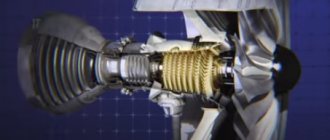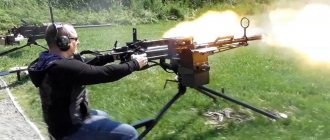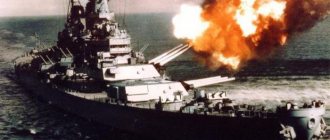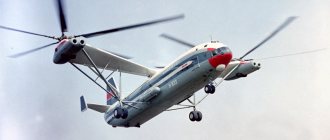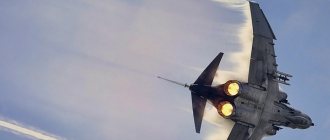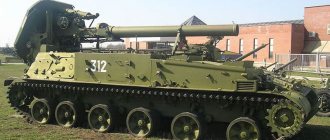Airbus A380 review
The Airbus A380 has several modifications:
- Basic models Airbus A380-800, 842, 861, 862. The length reaches about 73 meters. The difference lies in the installed engines: GP72XX and Trent 900. The ability to vary the on-board temperature from 18 to 30 degrees Celsius, thanks to internal 16 temperature zones, has become unique;
- A380-800F. Cargo model of an airplane. For some time, Airbus SAS accepted orders for the supply of such a modification, but its production was shelved until the design of the passenger version was fully adjusted. The specific timing is still unknown;
- A380-900. Currently in the design stage. It is 7 meters longer than the original version, and if the aircraft goes into mass production, it will be the longest and most powerful. The possible flight distance will reach 14,200 km;
- A380-1000. It is planned to be the most spacious airliner. In the future, it will be able to accommodate 1,073 passengers exclusively in economy class and 757 people in three classes. The start of use is expected to date from 2020-2025. The length of the aircraft is 87 meters;
- A380plus. This modification is currently being tested. On board will be able to accommodate 80 more people than in the basic version, and will also reduce fuel consumption and operating costs.
Economy class
Economy class on Airbus A380-800 aircraft is usually located entirely on the lower deck.
The interior space on the plane is very comfortable, both between the rows and in the corridors.
Immediately after takeoff, passengers are offered aperitifs and cold snacks. The menu is quite varied. It includes: appetizers, salads, first and second courses, butter, cheese, bread, dessert and various drinks.
On overnight flights, an amenity kit is offered: a small pillow, a blanket, a sleep mask, soft warm socks and a toothbrush.
During the entire trip, passengers can use the Internet. Screens built into the back of each seat allow you to spend your flight watching movies, your favorite programs or playing computer games.
Lufthansa, British Airways, Air France and Qantas offer premium economy on the A380. In this class, the seat pitch is greater, the seats are wider, and there is a retractable footrest. Between the seats there is a console that has sockets for charging electronic devices.
At the airport, passengers in this class can gain access to Lounges for a small surcharge.
Airbus A380 passenger cabin design
Airbus a380-800 Emirates interior diagram
The aircraft has an upper and lower deck, which are connected by two staircases, at the nose and tail of the aircraft. Various modifications of the A380 accommodate first class, business economy and premium economy classes.
First grade
On an Airbus A380 passenger aircraft, as a rule, first class seats are located at the very beginning. Everyone already knows that these places are the best, and the attitude towards the passenger is as if he were a guest of a five-star hotel. Each chair here can be converted into a small bed. The first class section may even have a shower, which is widely used by some airlines.
However, not everything is so smooth and the “suite” also has its drawbacks: these are seats located in the 1st and 4th rows, located in close proximity to the toilet. Also, opposite the 1st row there is a staircase connecting the two decks of the plane, and not every passenger will like such a neighborhood.
Business Class
Business class in the Airbus A380 is located immediately behind the first. There are also comfortable armchairs that can be turned into a bed if desired. The distance between the seats is sufficient, so you can easily stretch your legs to their full length. Passengers are provided with a minibar, which is usually included in the ticket price.
Economy class
On the bottom or main (if the plane consists entirely of one class) there is an economy class. It amounts to 399 seats in the classic layout offered by the manufacturer. The seats here do not lie flat, as in first and business class, but they are quite comfortable. According to the world standard, the distance for the legs between the rows reaches 80 cm. Each passenger has his own screen installed in the back of the previous seat, the ability to watch video, listen to audio, a USB connector and paid Internet. Availability of the latter will depend on the airline.
First class individual cabins
First class on board the A380 includes: Air France (9 seats), British Airways, Emirates and Qantas (14 seats), China Southern Airlines and Malaysia Airlines (8), Korean Air and Singapore Airlines (12).
Each first class seat is a small luxury cabin, which has everything you need for a comfortable flight: a wide, fully reclining seat, a pull-out table, a guest chair, a spacious luggage compartment, a mirror, and an entertainment screen. On the outside of the cabin there is a closet for personal belongings.
Some cabins are equipped with a double bed for two passengers.
The cabins are decorated with natural polished wood, leather, velor or high-quality plastic.
On night flights, passengers are provided with: pajamas, blankets and hygiene products. In addition, cosmetic sets are offered as gifts: several types of skin care products and eau de toilette from famous brands.
In first class, you can choose from several different gourmet menu options, from vibrant ethnic cuisines to healthy options. They can be ordered directly to your cabin or to the Lounge area. Cocktails, champagne and limited edition fine wines are offered throughout the flight.
On the A380, first class passengers have a Lounge seating area, where there is a bar, tables and sofas for a pleasant rest in company. The bar offers a large selection of drinks, desserts and snacks.
Best places
As mentioned earlier, the ideal seats on this airliner are in first and business class. In economy you can also get a good job on rows 45, 54 and 82. The seats are located far from the toilets and technical areas, there are no seats in front, which means there is plenty of legroom. Rows 68 and 81 would also be good. They are located near the windows and are considered one of the most comfortable in economy class.
Rows 43, 52, 67 and 80 are considered “average” in terms of convenience. There is enough space between the seats, but technical rooms and a toilet are located nearby, which can cause inconvenience. The worst seats are in row 88. This is where the wall is located, because of which the seat and the toilet room do not recline, where passengers scurry back and forth. It is better to buy tickets here when there are no other options.
Photo of the cabin in economy class:
Business Class
The number of business class seats varies from 50 to 97 in different airlines. As a rule, business class seats are located on the upper deck separately from economy class passengers. There is even a separate telescopic ladder for them.
Some airlines provide passengers with a gift of transportation with a personal driver from the airport to their destination.
Also, business class passengers have access to the lounge on the upper deck, where drinks and snacks are served free of charge.
Business class seats fold out into a horizontal bed two meters long. For relaxation, each chair has pillows, blankets, and sleep masks. Each seat has a power outlet and a USB port. Wi-Fi is provided throughout the flight. There is also a screen with a large selection of films, games and entertainment programs. Some airlines offer a personal minibar with drinks and champagne.
The business class menu is served on china. Experienced sommeliers will advise you to choose suitable wines. The business class menu is updated every month.
Main characteristics
The Airbus 380 has a wide fuselage (aisle). It is unique in its kind, which is why it is in great demand among many airlines, both domestic and foreign. The cockpit is the same for all models. Airbus SAS uses this tactic to save on crew training.
The Airbus 380 airliner has the following technical characteristics:
- Number of seats as standard - 525;
- Capacity - 853;
- Cabin width - 6.5 m;
- Length - 72.7 m;
- Height - 24.1 m;
- Wingspan - 80 m;
- Wing area - 845 sq. m;
- The empty weight of the aircraft is 276.8 thousand kg;
- Takeoff weight - 560 thousand kg;
- Landing weight - 386 thousand kg;
- Weight without fuel - 361 thousand kg;
- Fuel tank capacity - 310 thousand liters;
- Maximum commercial load - 83 thousand.
Aircraft flight data:
- Maximum flight altitude - 13.1 thousand m;
- The maximum flight distance with a full load is 15 thousand km;
- Run length - 2.9 thousand m;
- Run length - 2 thousand m;
- Engines - 4 RR Trent 970 or 4 Alliance GP7270.
Cockpit and crew
The cockpit of the Airbus A380 model (photo can be seen below) is practically no different from other aircraft of this manufacturer. This was done in order to reduce the cost of training crew members. To display all the necessary information, nine liquid crystal displays are installed inside. All of them are interchangeable and have a size of 20x15 centimeters. In this case, two screens are used as indicators of navigation data, two show basic flight data, two display the operating characteristics of power plants. In addition to them, one monitor serves to display the status of the entire system, and two more are multifunctional. The crew consists of 27 people, including two pilots and flight attendants in all classes. If the flight duration exceeds fourteen hours, two more pilots are added.
History of creation
The development of the wide-body aircraft project was started by Airbus SAS back in 1994. Then it was planned to compete with the then monopolist Boeing with its Boeing-747 airliner. Initially, the future brainchild of Airbus had the code name A3XX. The designers wanted to combine two fuselages of the company's largest aircraft at that time, the A340, but this would have led to a significant decrease in flight parameters, an increase in the acceleration length and total weight.
It was decided to use a two-deck model, which gave the car a number of advantages. The project started in 2000, and the amount of planned costs reached 8.8 million euros. The name of the aircraft also has an interesting history. Instead of A340, it received the number A380. In a number of Asian countries, eight is considered a lucky number and this probably served as a positive impetus for customers to purchase an airliner.
Construction was completed in 2005 and the aircraft was demonstrated at the airfield in Toulouse. During the tests, engineers identified errors in the design of the wing and it had to be changed in a timely manner. Tests on the ground and in the air were completed at the end of 2007 and the A380 received European certificates of conformity.
Where is it produced?
Fuselage cross-section
The aircraft is manufactured by the European company Airbus SAS, based in Toulouse (France). It also has several offices in Germany, Spain, France and the UK and two factories in Blagnac (a suburb of Toulouse) and Hannover (Germany). The company's activities began in 1969 after the merger of several small European aircraft manufacturing companies. Here, not only passenger aircraft are being developed, but also cargo aircraft, as well as vehicles adapted for military needs.
Cost of different models
The price of different modifications of the A380 can vary greatly. Its growth is also affected by the unstable economic situation in the world. Recently, there has been a steady trend towards higher prices for aircraft. And in general, the airliner itself of this model is considered the most expensive in the entire Airbus family.
The current price of the Airbus A380-800 is US$428 million. The company is still silent about the cost of the models, the production of which is planned to begin in the near future, and the final figure is known only to airlines that have placed pre-orders. Every year prices rise by about 2-3%. A total of 219 vehicles were sold and put into operation, and another 317 are under construction. This information is provided by the official Airbus representative office.
First grade
First class has only 14 seats on the plane; they are located in 4 rows. These places are distinguished by their high comfort. Each first class passenger is provided with a private room with a door, where there is everything necessary for a good flight. Namely, there is a chair with the ability to tilt the back 180 degrees, a large-screen TV, the ability to access the Internet, and there are also sockets and a minibar installed there.
First class passengers are provided with a bar counter, a well-designed menu from the chef, showers and a large number of staff who monitor their comfort during the flight. The work of airline staff can be compared with services in five-star hotels.



